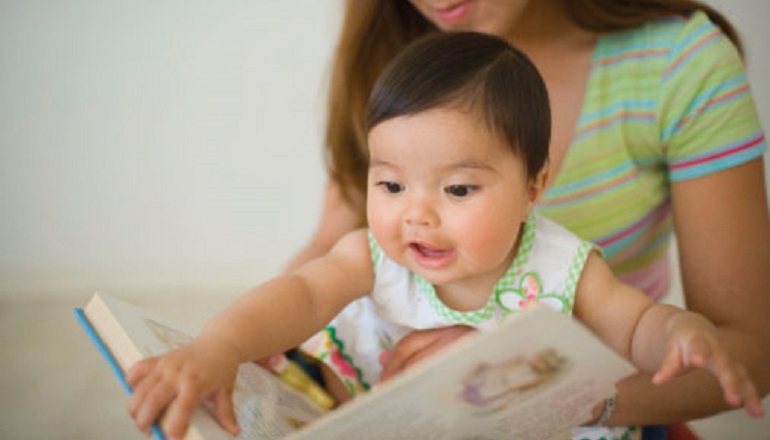New parents are often overwhelmed by caring for an infant or toddler. By nightfall (or at naptime), you’re probably ready to conk out shortly after your baby does, and reading a bedtime story may be the last thing on your mind.
Yet children benefit greatly from books. Research shows that reading to kids in the first years of life can help boost brain development, increase vocabulary, and open them to learning. Board books, with bright, simple images, provide visual stimulation and help your baby connect pictures with words.
Reading can also forge a bond between the two of you. If your child was adopted as an older infant or toddler, reading sessions can ease her into a new family, and its language and routines. What’s more, the predictability of a nightly (or afternoon) story time gives you both something to look forward to.
Stocking Your Library
Babies and toddlers have short attention spans, so don’t be surprised if story time lasts no longer than three to five minutes. To keep your baby engaged, choose books with simple rhythms and rhyming text, large print, and bold images. (Books with black-and-white illustrations, or bright colors, work well with young babies whose vision is still developing.)
Babies also love books that are interactive (think Pat the Bunny), with features like mirrors, squeaky noisemakers, textures, or liftable flaps. You might choose soft, plastic books they can read and play with in the bath, or sturdy board books she can page through.
When reading to your baby, use lots of expression. Researchers have found that babies like (and learn best from) a sing-song, exaggerated tone. To hold your child’s attention, talk about the pictures, ask him to point to the horse or to the moon, or use animal sounds and other noises to make the story come alive. Some babies prefer to move around or play with toys while you read. If you have a restless listener, it’s fine to let him crawl about or pound on clay during story time.
Finally, remember that babies learn through repetition. So read your child’s favorites again and again. Choose books that you enjoy, as well. Your enthusiasm will create a positive association between books and family love, and will instill in your child a love of reading.



